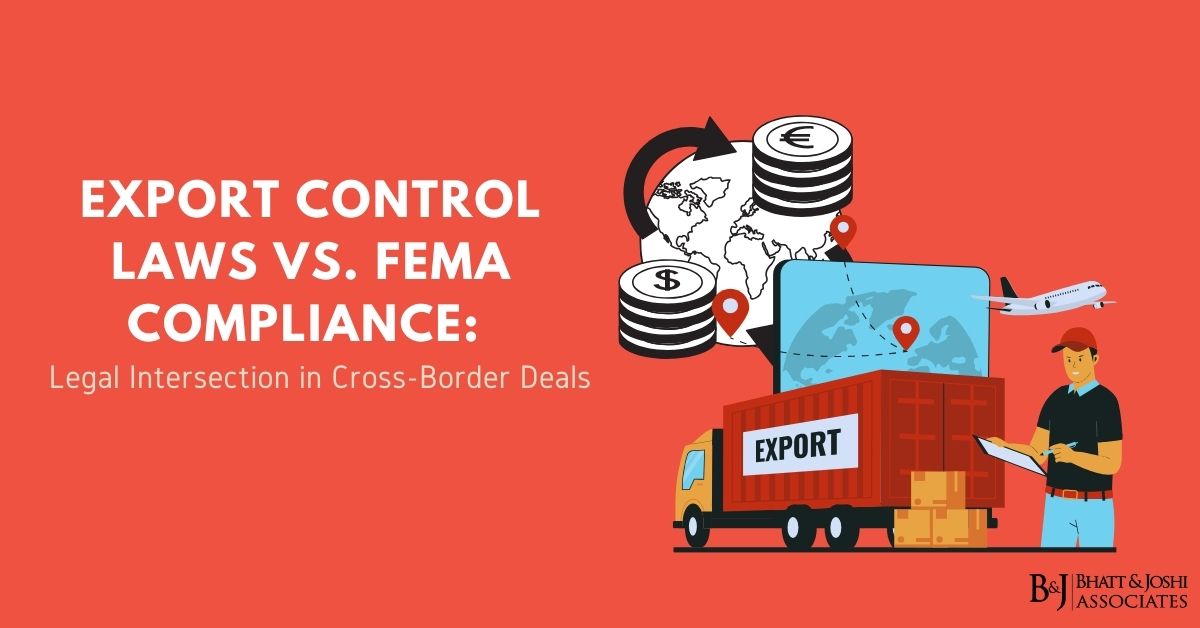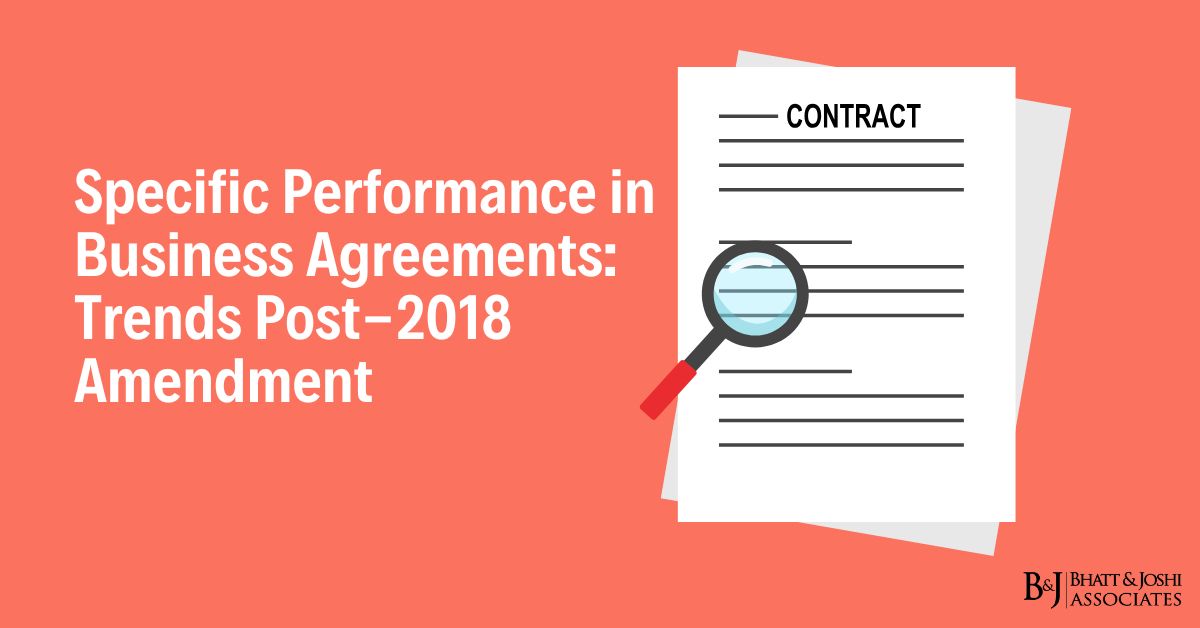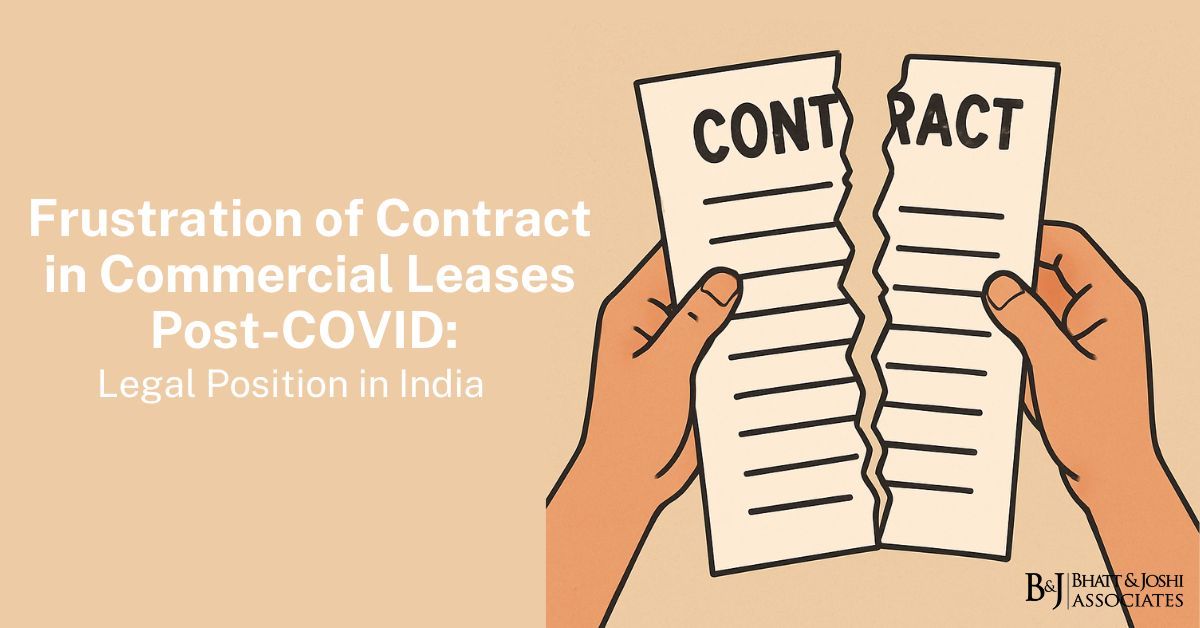Introduction
The regulatory framework governing cross-border commercial transactions in India presents a complex tapestry of overlapping legal regimes. At this intersection, two significant legal frameworks—Export Control Laws and the Foreign Exchange Management Act, 1999 (FEMA)—create a challenging compliance landscape for businesses engaged in international trade and investment. While export control laws primarily regulate the movement of sensitive goods, technologies, and services for national security and foreign policy objectives, FEMA governs all foreign exchange transactions and cross-border investments with a focus on economic stability and capital account management. This regulatory duality creates significant compliance challenges for businesses navigating cross-border deals.
This article examines the complex interplay between Export Control Laws and FEMA, analyzing their points of convergence and divergence, identifying potential conflicts, and offering strategic insights for businesses to navigate compliance requirements effectively. Through an examination of landmark judicial pronouncements, regulatory developments, and emerging trends, the article aims to provide a comprehensive understanding of how these parallel regimes interact in practice and impact cross-border commercial arrangements.
The Dual Regulatory Framework of Export Control and FEMA
India’s Export Control Regime
India’s export control regime has evolved significantly over the past two decades, shaped by international commitments and domestic security imperatives. The legal framework comprises several key legislations, including the Foreign Trade (Development and Regulation) Act, 1992 (FTDR Act), the Weapons of Mass Destruction and their Delivery Systems (Prohibition of Unlawful Activities) Act, 2005 (WMD Act), and the Atomic Energy Act, 1962.
The WMD Act of 2005 represents a watershed moment in India’s export control architecture. In Cryptome Association v. Union of India (2012), the Delhi High Court upheld the constitutional validity of the WMD Act, recognizing that “the legislation fulfills India’s international obligations while balancing the imperatives of national security with legitimate commercial interests.” The court emphasized that the restrictions imposed were reasonable and served the larger public interest of preventing proliferation of weapons of mass destruction.
The SCOMET (Special Chemicals, Organisms, Materials, Equipment and Technologies) list, maintained under the Foreign Trade Policy, categorizes controlled items across eight categories. In Hemisphere Navigation Ltd. v. Directorate General of Foreign Trade (2018), the CESTAT underscored that “the SCOMET list must be interpreted purposively, consistent with India’s international non-proliferation commitments, while ensuring proportionate application to commercial transactions without undue burden on legitimate trade.”
FEMA’s Regulatory Landscape
The Foreign Exchange Management Act, 1999, which replaced the stringent Foreign Exchange Regulation Act, 1973, marked a paradigm shift from criminalization to administrative regulation of foreign exchange transactions. FEMA’s primary objectives include facilitating external trade and payments while promoting the orderly development and maintenance of the foreign exchange market in India.
In Mahindra & Mahindra Ltd. v. Enforcement Directorate (2019), the Bombay High Court observed that “FEMA represents a transition from the era of control to regulation, recognizing the imperatives of globalization while preserving macroeconomic stability through prudential regulatory mechanisms.” The court further noted that the interpretative approach to FEMA must reflect this legislative intent of facilitation rather than obstruction.
FEMA operates through a complex network of regulations, master directions, and circulars issued by the Reserve Bank of India (RBI). The Foreign Exchange Management (Current Account Transactions) Rules, 2000, Foreign Exchange Management (Export and Import of Currency) Regulations, 2015, and Foreign Exchange Management (Non-Debt Instruments) Rules, 2019 form the core regulatory framework.
Overlap of FEMA and Export Control Regulations
Dual-Use Technologies and Cross-Border Investment
The most significant area of regulatory overlap concerns dual-use technologies—items with both civilian and military applications. When such technologies attract foreign investment or involve cross-border licensing, both regulatory frameworks become simultaneously applicable, often creating compliance complexities.
In Bharat Electronics Ltd. v. Reserve Bank of India (2020), the Karnataka High Court addressed this overlap in the context of a technology transfer agreement with a foreign entity. The court recognized that “transactions involving strategic technologies necessitate compliance with both export control regulations and foreign exchange provisions, creating a composite regulatory obligation that must be harmoniously construed to avoid conflicting compliance requirements.”
The Delhi High Court, in Reliance Industries Ltd. v. Union of India (2018), further elaborated on this principle, noting that “where a transaction falls within the ambit of both FEMA and export control laws, the more stringent provision would generally prevail, though specific exemptions under either regime must be given appropriate effect.” This judicial recognition of regulatory primacy provides valuable guidance for resolving potential conflicts.
Cross-Border Technology Transfer and Services
Another significant area of intersection involves cross-border technology transfers and services. When Indian entities provide technical assistance or services related to controlled technologies to foreign partners, they must navigate both the export control provisions under the WMD Act and FEMA regulations governing export of services.
In HCL Technologies Ltd. v. Joint Secretary (Foreign Trade) (2017), the Delhi High Court addressed a case involving the export of encryption technology services, stating that “technical services that embody controlled technologies attract dual compliance requirements, necessitating careful structuring of commercial arrangements to ensure adherence to both regulatory frameworks.” The court emphasized the need for integrated compliance approaches that simultaneously address both sets of regulatory requirements.
Potential Conflicts and Compliance Challenges in Export Control and FEMA
Regulatory Temporality and Sequencing
A significant challenge arises from the different temporal sequences required for compliance under the two regimes. Export control clearances often need to be obtained before executing commercial agreements, while FEMA compliance may be required at different stages of the transaction.
In Larsen & Toubro Ltd. v. Directorate of Revenue Intelligence (2019), the CESTAT addressed this issue, noting that “the sequencing of regulatory approvals creates practical challenges for businesses, particularly in time-sensitive transactions. However, this cannot justify retrospective regularization attempts, as both regimes emphasize prior authorization rather than post-facto validation.”
The Bombay High Court, in Deutsche Bank AG v. Reserve Bank of India (2021), offered a practical approach, suggesting that “while regulatory approvals under different regimes may follow distinct timelines, prudent practice dictates securing in-principle clearance under both frameworks before substantial commitment of resources or finalization of commercial terms.” This judicial guidance encourages proactive compliance planning to address temporal disparities.
Definitional Divergences in Export Control and FEMA Laws
Another significant challenge stems from definitional disparities between the two regulatory frameworks. Key terms such as “technology,” “transfer,” “export,” and “deemed export” may carry different meanings under export control laws and FEMA regulations, creating interpretive complexities.
In Sunflower Commercial Engineers Pvt. Ltd. v. Enforcement Directorate (2020), the Calcutta High Court confronted this issue in the context of technology consulting services provided to a foreign entity. The court observed that “where definitional ambiguities exist between regulatory regimes, courts must adopt a harmonious construction that respects the specialized objectives of each framework while ensuring that legitimate commercial activities are not unduly constrained.”
The Supreme Court, in Union of India v. Jindal Steel and Power Ltd. (2022), provided more general guidance on regulatory interpretation, noting that “specialized economic legislations must be interpreted in light of their specific regulatory objectives, with careful attention to the statutory context rather than mechanical application of definitions across distinct regulatory domains.”
Jurisdictional Complexities in Export Control and FEMA
The different regulatory authorities administering these frameworks—the Directorate General of Foreign Trade (DGFT) for export controls and the RBI for FEMA—add another layer of complexity. Each authority has its own procedural requirements, enforcement mechanisms, and interpretative approaches.
In Essar Steel India Ltd. v. Union of India (2017), the Gujarat High Court addressed jurisdictional conflicts, stating that “while regulatory coordination is desirable, the absence of formal coordination mechanisms cannot exempt a party from separate compliance under each applicable regime.” The court rejected the appellant’s contention that approval from one authority should imply compliance with other regulatory requirements.
The Delhi High Court, in Vodafone Idea Ltd. v. Reserve Bank of India (2021), further elaborated on the issue of jurisdictional overlap, noting that “regulatory coordination, though administratively desirable, cannot be judicially mandated beyond statutory provisions. Commercial entities must engage proactively with each regulatory authority, recognizing their distinct mandates and compliance expectations.”
Landmark Judicial Pronouncements
Supreme Court’s Approach to Regulatory Convergence
The Supreme Court has addressed the broader issue of regulatory coordination in several significant judgments. In Cellular Operators Association of India v. Telecom Regulatory Authority of India (2016), the Court emphasized that “regulatory harmony is a desirable objective, particularly where multiple specialized regimes govern the same economic activities. However, in the absence of explicit statutory coordination mechanisms, each regulatory authority must discharge its mandate independently while being cognizant of the broader regulatory landscape.”
More specifically, in Sesa Sterlite Ltd. v. Union of India (2020), the Supreme Court considered the interaction between export controls and foreign exchange regulations in the context of cross-border mining investments. The Court observed that “these parallel regulatory frameworks reflect distinct but complementary public policy objectives—national security and economic stability respectively. While they operate independently, courts must interpret them in a manner that allows legitimate commercial activities to proceed without unnecessary regulatory friction.”
High Courts on Practical Compliance Approaches
Various High Courts have provided practical guidance on navigating dual compliance requirements. In Cipla Ltd. v. Union of India (2019), the Bombay High Court addressed a pharmaceutical company’s challenge to export control restrictions on dual-use chemicals, noting that “compliance planning must integrate both regulatory frameworks from the transaction design stage, rather than treating them as sequential or separable compliance exercises.”
The Delhi High Court, in Microsoft Corporation (India) Pvt. Ltd. v. Joint Secretary (Foreign Trade) (2018), provided guidance on technology licensing arrangements, stating that “cross-border technology transactions require calibrated structuring to address both export control sensitivities and foreign exchange implications. Regulatory compartmentalization in compliance approach increases the risk of inadvertent violations.”
Strategic Compliance Frameworks for Cross-Border Deals
Integrated Due Diligence
The judicial precedents underscore the importance of integrated due diligence that simultaneously addresses both regulatory frameworks. In Suzlon Energy Ltd. v. Enforcement Directorate (2021), the Bombay High Court emphasized that “comprehensive regulatory due diligence is not merely a compliance exercise but a critical component of transaction risk assessment and commercial viability determination.”
The Gujarat High Court, in Adani Enterprises Ltd. v. Union of India (2019), further observed that “due diligence must extend beyond formal requirements to substantive assessment of regulatory risks, including potential shifts in policy interpretation or enforcement priorities that could impact transaction viability.”
Structured Transaction Design
Courts have also recognized the importance of thoughtful transaction structuring to navigate the dual regulatory landscape efficiently. In GE India Industrial Pvt. Ltd. v. Commissioner of Customs (2020), the CESTAT noted that “transaction structuring that artificially separates technology components from financial arrangements may face regulatory scrutiny under both frameworks. Integrated transaction design that coherently addresses both dimensions is more likely to withstand regulatory examination.”
The Chennai High Court, in Renault Nissan Automotive India Pvt. Ltd. v. Union of India (2022), addressed this issue in the automotive technology transfer context, stating that “commercial arrangements involving controlled technologies must be structured with careful attention to both export control thresholds and foreign exchange implications, particularly regarding technology valuation, payment mechanisms, and performance conditions.”
Regulatory Developments and Future Trends in Export Control & FEMA
Regulatory Harmonization Efforts
Recent administrative developments indicate growing recognition of the need for greater coordination between export control and FEMA compliance frameworks. The establishment of the Inter-Ministerial Working Group on Strategic Trade Controls in 2020 represents a significant step toward regulatory harmonization.
In Tata Consultancy Services Ltd. v. Commissioner of Customs (2023), the CESTAT acknowledged these developments, noting that “emerging coordination mechanisms between regulatory authorities, while not altering statutory obligations, may facilitate more coherent compliance approaches and reduce inadvertent violations arising from regulatory fragmentation.”
Impact of Geopolitical Shifts
Geopolitical developments, particularly enhanced scrutiny of strategic technologies and supply chain security, have intensified the intersection between these regulatory frameworks. In Wipro Ltd. v. Union of India (2022), the Karnataka High Court observed that “geopolitical realignments have heightened the national security dimensions of technology transactions, necessitating more integrated assessment of both export control and foreign exchange implications of cross-border commercial arrangements.”
Conclusion
The regulatory intersection between Export Control Laws and FEMA presents significant challenges for businesses engaged in cross-border deals. The judicial pronouncements examined in this article reveal an evolving approach that recognizes both the distinct objectives of these regulatory frameworks and the practical challenges arising from their simultaneous application.
As courts have consistently emphasized, effective navigation of this complex landscape requires integrated compliance planning, comprehensive due diligence, and thoughtful transaction structuring. The emerging trend toward greater regulatory coordination offers hope for reduced compliance friction in the future, though businesses must remain vigilant to the dynamic nature of both regulatory frameworks.
In this evolving regulatory landscape, legal practitioners and compliance professionals must develop specialized expertise that spans both domains, recognizing that the intersection of export control and FEMA compliance is not merely a technical challenge but a strategic consideration in cross-border commercial dealings. As India continues to integrate more deeply with global markets and supply chains, mastering this regulatory complexity will remain essential for successful international business operations.














